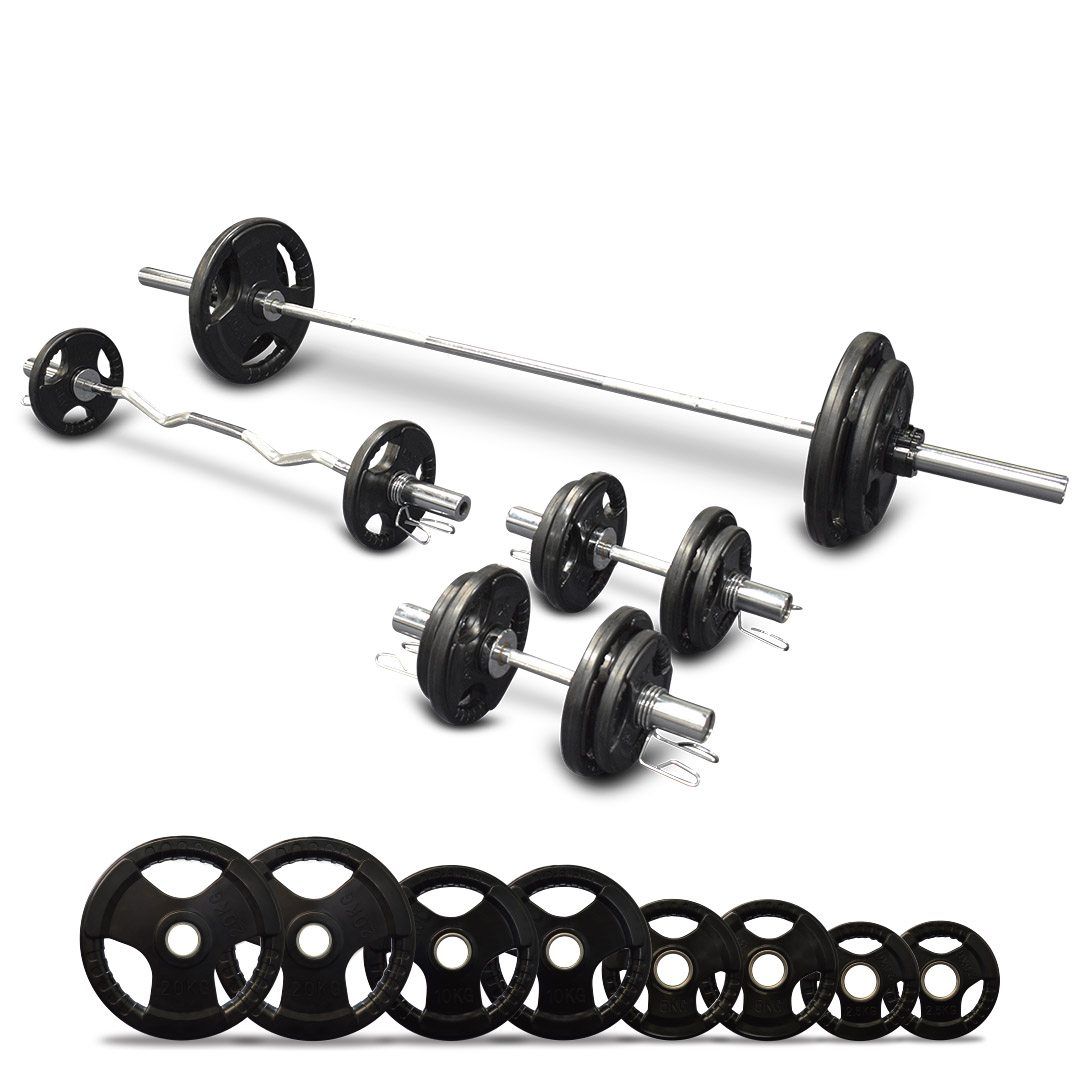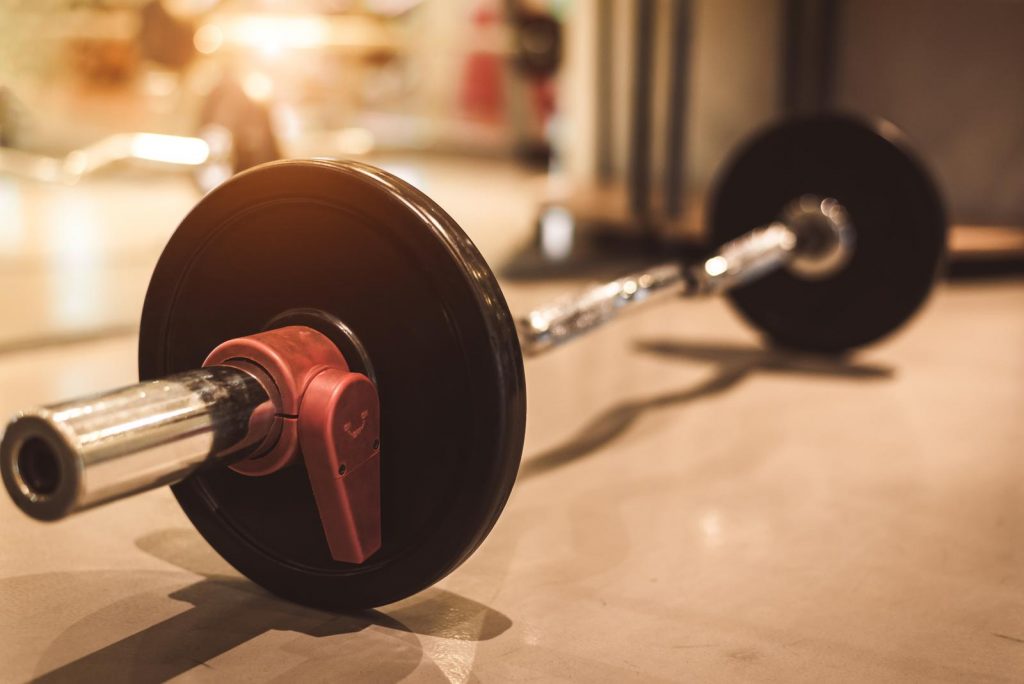
Choosing Between Standard and Olympic Weight Sets for Your Gym
Choosing the right weight sets for your gym is crucial for its success. The gym equipment you provide can make or break the fitness experience for your members. That’s why understanding the differences between a standard and an Olympic weight set is essential.
Standard sets are designed for general fitness purposes, catering to a wide range of users. They are versatile and suitable for beginners or those looking to maintain their fitness levels. On the other hand, Olympic sets are specifically designed for competitive weightlifting. They meet strict standards and regulations set by international sports organizations.
By offering both standard and Olympic sets in your gym, you can cater to a diverse clientele. While standard sets provide accessibility and flexibility, Olympic sets allow serious athletes to train at a higher level.
Olympic Set vs Standard Weight: The Core Differences
Size and Design Variations
Olympic and standard weights differ in their size and design. Olympic plates are larger, with a standardized diameter of 450mm, while standard plates have a smaller diameter of 1 inch (25mm). The center hole size also varies, with Olympic plates having a 2-inch center hole, allowing them to fit on Olympic-sized barbells. On the other hand, standard plates have a 1-inch center hole that fits snugly on standard-sized barbells.
Greater Load Capacity
One significant advantage of Olympic weights is their greater load capacity compared to standard ones. Olympic weightlifting involves heavy lifting, and they are designed to withstand higher loads. Olympic plates are typically made from cast iron or steel and can range from 2.5 pounds to over 100 pounds. This makes them ideal for strength training and powerlifting exercises that require heavier loads.
Barbell Sizes
Another key distinction between Olympic and standard sets lies in the barbell sizes used with each type of plate. Olympic barbells have a standardized length of 7 feet (2.2 meters) and weigh approximately 45 pounds (20 kilograms). They also have rotating sleeves at the ends, allowing for smoother movements during lifts such as snatches or cleans.
In contrast, standard barbells are shorter, usually measuring around 5-6 feet (1.5-1.8 meters) in length. They are lighter than Olympic barbells, weighing approximately 15-30 pounds (7-14 kilograms). Standard barbells do not typically feature rotating sleeves like their Olympic counterparts.
The difference in barbell sizes directly affects the compatibility between the weights and the bars themselves. Using an Olympic plate on a standard-sized barbell would result in an ill-fitting combination that compromises safety and stability during exercises.
Read Also: What to Look for When Buying a Squat Rack for Sale
Key Factors to Consider for Your Gym’s Needs
Before deciding on any sets for your gym, it is crucial to assess your gym’s specific requirements. By considering factors such as budget, space availability, and target clientele, you can make an informed decision between standard and Olympic that best align with your fitness goals and needs.
Assessing Your Gym’s Specific Requirements
Every gym has unique requirements based on its size, clientele, and overall objectives. Start by evaluating the fitness goals of your gym. Are you primarily focused on strength training or catering to a broader range of workouts? Understanding the specific needs of your clients will help determine which set is most suitable.
Consider the available budget for purchasing sets. Standard ones tend to be more affordable compared to Olympic ones. If you are just starting or have a limited budget, standard plate sets may be a practical choice without compromising quality.
Considering Factors such as Budget, Space Availability, and Target Clientele
Space availability is another important consideration when choosing between standard and Olympic sets. Olympic sets typically require more space due to their larger size and additional equipment like barbells and plates. If you have a smaller gym or limited space dedicated to weightlifting areas, standard might be a better fit.
Furthermore, think about the target clientele of your gym. Are they mostly beginners or experienced lifters? Standard plates are generally recommended for beginners as they provide ample resistance without overwhelming them with heavy loads. On the other hand, Olympic plates offer greater versatility in terms of progression and allow advanced lifters to continually challenge themselves.
Evaluating Long-Term Goals
It is essential to evaluate the long-term goals of your gym when making this decision. If you envision expanding your facility or attracting serious weightlifters in the future, investing in Olympic sets might be a wise choice. These sets are commonly used in professional competitions and can attract serious athletes who seek high-quality equipment.
On the other hand, if your gym focuses on overall fitness and caters to a broader range of clients, standard sets can fulfill the needs of most individuals. They are versatile enough for various exercises and provide sufficient resistance for general strength training.
Understanding the Advantages of Olympic Sets

Versatility of Olympic Weight Sets
Olympic sets offer a wide range of versatility for various exercises and training programs. Whether you’re focusing on strength training, powerlifting, or general fitness, they provide the flexibility to target different muscle groups effectively.
With an Olympic barbell and plates, you can perform exercises like squats, deadlifts, bench presses, overhead presses, and more. The ability to switch out plates allows you to adjust according to your fitness level and specific exercise requirements.
Read Also: Features to Consider When Buying a Workout Adjustable Bench
Gradually Increasing Loads with Olympic Plates
One significant advantage of using Olympic plates is the ability to gradually increase loads over time. This concept is known as progressive overload and is essential for building strength and muscle mass.
Olympic plates come in various sizes, ranging from 2.5 pounds (1.1 kilograms) up to 45 pounds (20 kilograms). By adding small increments to the barbell during each workout session, you can challenge your muscles progressively. This approach helps prevent plateauing and ensures ongoing progress in your fitness journey.
Consistent Technique and Form with Standardized Dimensions
Another benefit of Olympic sets is their standardized dimensions. Olympic plates have a consistent diameter of 17.7 inches (45 centimeters), allowing for precise technique and form across different exercises.
The standardized dimensions also enable uniformity among athletes and trainers. Regardless of where you train or compete, familiarity with Olympic plates ensures that techniques are consistent across platforms.
For example, when performing a squat with an Olympic barbell loaded with bumper plates at one gym, the same movement pattern can be replicated at another gym without any adjustments due to variations in equipment size.
Making the Right Choice for Home Gyms and Professional Facilities
Evaluating Space Limitations and Budget Constraints
Two crucial factors to consider are space limitations and budget constraints. Standard sets are generally more compact and affordable compared to Olympic. If you have limited space in your home gym or a tight budget, a standard plate set may be the better choice. These sets typically consist of a barbell and plates with a smaller diameter, making them easier to store in small spaces.
Understanding the Demands of Professional Facilities
In contrast, professional facilities such as fitness centers or gyms catering to athletes have different demands. Olympic sets are often preferred in these settings due to their durability and versatility. They can withstand heavy use over time, which is crucial in high-traffic environments. Olympic plates offer more options for clients who want to progress in their strength training journey.
Read Also: A Step-by-Step Guide to the Bench Press Workout
The Importance of Choosing Wisely
Choosing between standard and Olympic sets requires careful consideration of various factors based on the type of gym you have or intend to establish. By evaluating space limitations and budget constraints for home gyms, understanding the demands of professional facilities regarding durability, versatility, and client preferences, and considering potential growth and expansion plans, you can make an informed decision.
Ultimately, the right choice will depend on your unique circumstances and goals. Whether you opt for a standard set or invest in Olympics set, what matters most is that you provide a safe and effective environment for individuals to achieve their fitness goals.
Conclusion
So, It all boils down to your specific needs and goals. Consider the core differences between the two types of weights, such as their size, versatility, and pricing. Reflect on the advantages that Olympic weight sets bring to the table, including their standardized design and compatibility with professional facilities. By evaluating these factors and aligning them with your gym’s requirements, you can make an informed decision that will optimize your clients’ workout experience.
Now that you have a better understanding of the options available, it’s time to take action. Assess your gym’s space, clientele, and budget to determine whether a standard or Olympic weight set is the right fit. Remember, it’s not just about the equipment itself but also about how it aligns with your gym’s overall vision. So go ahead and equip your gym with the equipment that will elevate your clients’ training sessions to new heights. Happy lifting!
